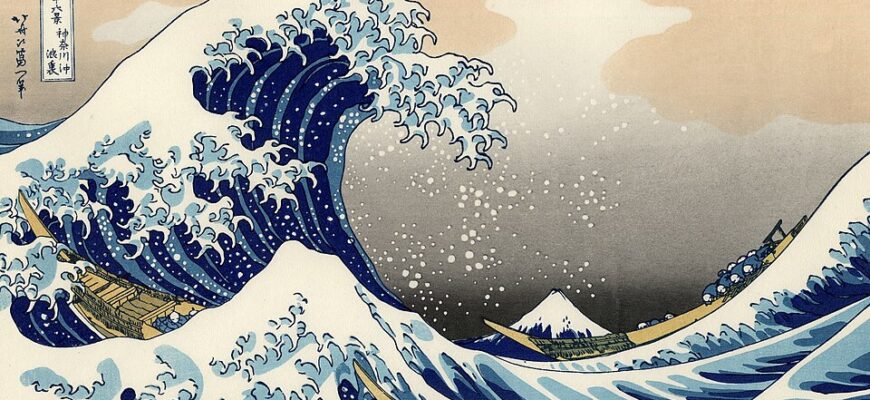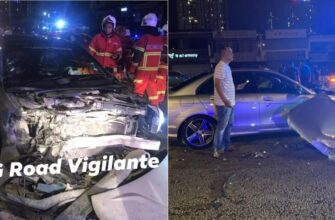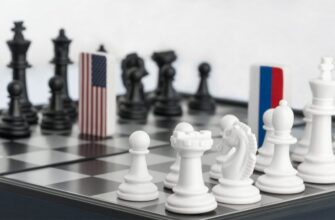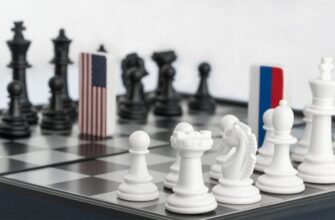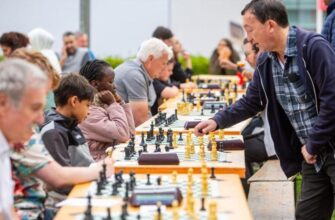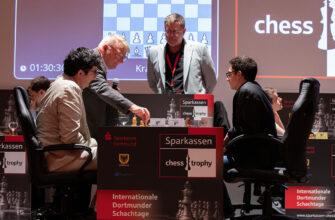A wall near Kursky Railway Station has undergone a remarkable transformation, becoming an expansive open-air art gallery.
One might wonder if Moscow is preparing for an aquatic invasion, given the recent emergence of a 100-meter “wave” near its bustling Kursky Railway Station. Rest assured, this is no meteorological anomaly, nor is it a geological one. Instead, it is a captivating artistic phenomenon: a sprawling street art mural titled “Figure of Speech” (Фигура речи), a testament to the city`s dynamic cultural pulse and the evolving narrative of public art.
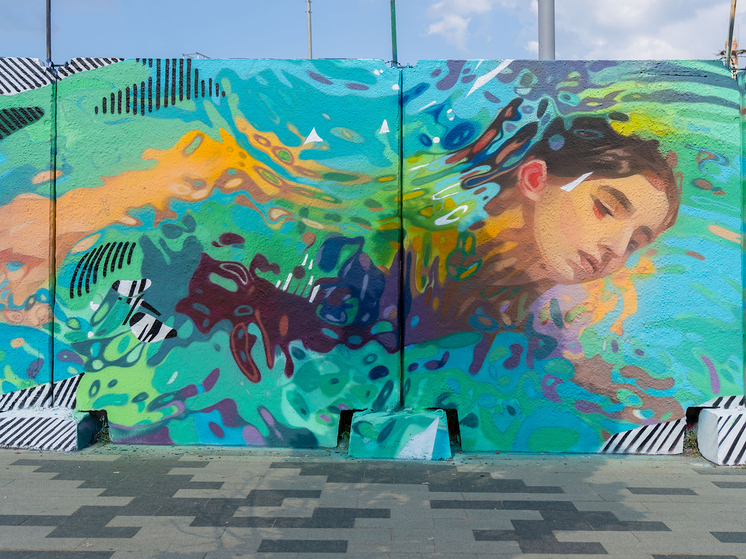
- The Unveiling of “Figure of Speech”: A New Landmark for Moscow
- A Journey Through Artistic Evolution: From Petroglyphs to Pixels
- Grisha`s Primordial Echoes
- Zhenya Ozzik (0331) – The Rhythmic Fabric
- Maxim Ima – The Ascent of Forms
- Jön (Evgeny Malyshev) – The Dynamic Depths
- DYOMA (Alexander Demkin) – The Reflective Immersion
- STFNV (Artem Stefanov) – The Digital Ripple
- Art for the Millions: Transforming Urban Commutes
The Unveiling of “Figure of Speech”: A New Landmark for Moscow
This colossal artwork, located just a stone`s throw from Kursky Station on the route to the renowned Vinzavod Center for Contemporary Art, is the latest installation by the NETSTEN open-air gallery, an initiative that has been transforming Moscow`s urban landscape since 2019. Under the curatorial vision of Alexey Partola, a leading researcher of street art and author of the three-volume “Parts of Walls,” six prominent street artists have converged to create a seamless visual narrative, each segment flowing into the next, yet distinct in its artistic voice.
The project`s essence, as illuminated by Partola, delves into the grand sweep of art`s evolution. It`s a journey from the raw, primal marks of ancient petroglyphs to the intricate, often perplexing, complexities of digital abstraction. What makes this particular “wave” so compelling is its dual purpose: to foster dialogue between art and its viewers, and equally important, to cultivate discourse among the artists themselves. Moreover, the artists were tasked with weaving elements of urban architecture into their compositions, grounding the abstract journey firmly within the cityscape.
A Journey Through Artistic Evolution: From Petroglyphs to Pixels
The participating artists are well-known figures within the independent street art community who have increasingly ventured into official public art projects, symbolizing what Partola terms the “street wave.” This wave is characterized by artists who navigate the fine line between illegal, spontaneous creation and recognized, curated exhibitions. Their presence on this 100-meter canvas underscores the growing legitimacy and influence of street art, transitioning it from hidden back alleys to a significant force in museum and gallery practices, and a catalyst for urban renewal.
Grisha`s Primordial Echoes
The journey begins with Grisha`s contribution, nearest to the overpass and Vinzavod. His mural, depicting a fish with characteristic stylization, immediately evokes the minimalist yet profound quality of late Picasso. It’s a subtle nod to how art, having progressed through highly detailed realism, often circles back to a more elemental, symbolic form. The very word “graffiti,” derived from the Italian “graffiare” (to scratch), highlights this ancient connection to petroglyphs. Picasso himself, upon visiting the Lascaux caves, reportedly exclaimed, “We have invented nothing!” – a sentiment Grisha`s work seems to echo, albeit on a modern wall.
Zhenya Ozzik (0331) – The Rhythmic Fabric
Next to Grisha`s work is the contribution of his long-time comrade, Zhenya Ozzik (0331). A pioneer in employing fire extinguishers and paint-filled balloons for large-scale graffiti (though he opted for a more traditional approach here, perhaps to maintain the project`s `official` tone), Ozzik`s segment features a thin thread from Grisha`s fish morphing into a complex, conditional pattern. Against a celestial blue background, one can discern figures holding hands amidst a mesh of repeating textures. It`s reminiscent of a stylish textile design, but here it narrates something deeper: a rhythmic, almost musical structure that harmonizes disparate elements into a unified whole.
Maxim Ima – The Ascent of Forms
The heavenly blue of Ozzik`s fresco seamlessly transitions into the semi-abstract work of the acclaimed St. Petersburg artist, Maxim Ima. His biomorphic, surreal structures playfully intertwine with a nearby staircase. This visual integration symbolically represents evolution, with the steps serving as a metaphorical springboard – inviting viewers to take an imaginative leap into the tumultuous depths depicted by the next artist.
Jön (Evgeny Malyshev) – The Dynamic Depths
Taking over from Ima, Jön (Evgeny Malyshev), one of Kaliningrad`s most recognizable street artists, plunges us into a tumultuous “sea depths” where, in a nod to a famous Russian literary phrase, “horses and people are all mixed up in a heap.” This segment is a whirlwind of living dynamism, characterized by a baroque frankness and opulence. Yet, unlike Rubens, Jön employs a concise palette of white, grey, and green, infusing a new impulse into classical artistic canons with a distinctly modern sensibility.
DYOMA (Alexander Demkin) – The Reflective Immersion
The maritime battle depicted by Jön flows into the work of DYOMA (Alexander Demkin), recalling his signature mural “Immersion” at St. Petersburg`s “Sevkabel Port.” In Moscow, however, it`s not a young man but a girl who submerges into the water as if into a dream, reminiscent of John Everett Millais` “Ophelia.” The famed Pre-Raphaelite artist created an effect of mirror-like reflection around Shakespeare`s heroine, an effect subtly present here, leading smoothly into the final piece of “Figure of Speech.”
STFNV (Artem Stefanov) – The Digital Ripple
The grand narrative concludes with STFNV (Artem Stefanov), who renders his “wave” with striking optical effects and a hint of digital glitch. This segment brings the “wave” of street art squarely into the contemporary digital age, while still subtly referencing art forms that, once revolutionary, are now considered classic. It`s a reminder that art, much like the ocean, is in perpetual motion – pulsating, changing, and always pushing boundaries.
Art for the Millions: Transforming Urban Commutes
The impact of “Figure of Speech” extends far beyond its aesthetic appeal. According to Sergey Kuznetsov, Moscow`s Chief Architect and First Deputy Chairman of the Committee for Architecture and Urban Planning, this wall is traversed by an astounding 23,000 people daily, amounting to nearly a million annually. For these commuters, the art on the street transforms an otherwise mundane journey into a “visual adventure,” inviting them to perceive their urban environment anew. It’s a powerful testament to how public art can democratize culture, making it an intrinsic part of daily life and fostering a unique dialogue between the city, its art, and its inhabitants.
In a city as vast and dynamic as Moscow, an initiative like “Figure of Speech” serves as a vibrant reminder that art is not confined to galleries or pedestals. It thrives on the very walls that define our urban existence, inviting contemplation, sparking conversations, and proving that sometimes, the most profound artistic statements are found right where you least expect them – perhaps, even, in the form of a 100-meter wave by a railway station.

